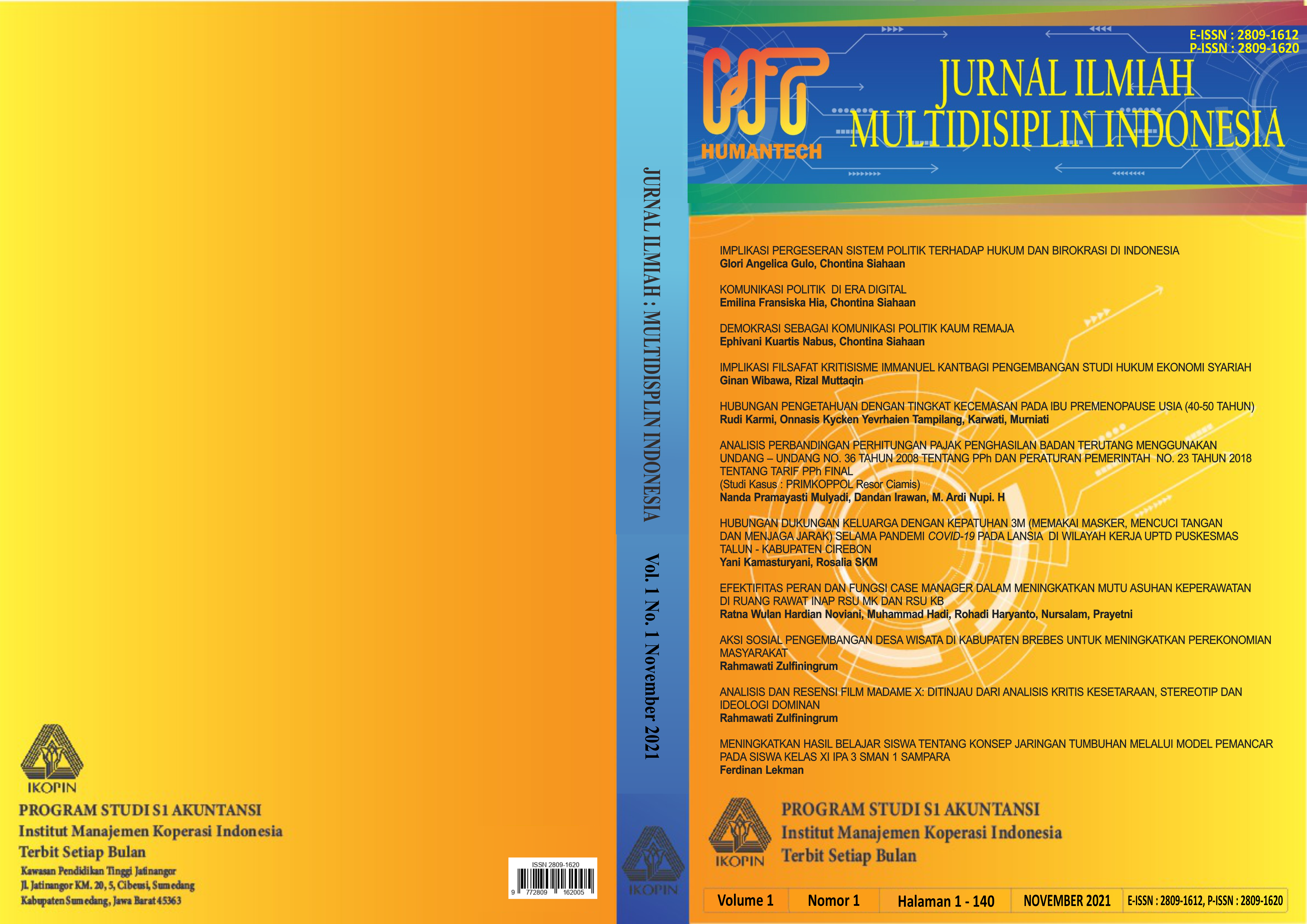MENINGKATKAN HASIL BELAJAR SISWA TENTANG KONSEP JARINGAN TUMBUHAN MELALUI MODEL PEMANCAR PADA SISWA KELAS XI IPA 3 SMAN 1 SAMPARA
Main Article Content
Abstract
This research is a Classroom Action Research in an effort to improve student
learning outcomes about the concept of plant tissue through the use of a
microscope, android, note book and chart (transmitter) which is an acronym for
the sentence use of a microscope, android, note book and chart. The aims of this
researcher are to: (1) Improve student learning outcomes about plant tissue
concepts through the use of microscopes, androids, note books and charts in class
XI IPA 3 SMA Negeri 1 Sampara odd semester 2017-2018 school year, (2 )
Increase student learning activities about the concept of plant tissue through the
use of microscopes, androids, note books and charts in class XI IPA 3 SMA
Negeri 1 Sampara in odd semesters in the 2017-2018 learning year, (3) Increase
teacher teaching activities about network concepts through the use of a
microscope , android, note books and charts in class XI IPA 3 SMA Negeri 1
Sampara odd semester 2017-2018 learning year. The formulation of the problem
in this study is "Can the use of microscopes, androids, note books and charts
improve student learning outcomes on the concept of Networking? plants in class
XI IPA 3 SMA Negeri 1 Sampara in the academic year 2017-018. The hypothesis
of this classroom action research is that the use of a microscope, android, note
book and chart (transmitter) will improve student learning outcomes about the
concept of plant tissue in science class 3 SMA Negeri 1 Sampara students in the
2017-2018 school year. Based on the results of analysis and reflection, it can be
concluded that: Student activity during learning activities increased. In the first
cycle, the average student activity was 77.78%. While in the second cycle of
student activities reached an average of 97%. This means that there is an
increase from cycle I to cycle II of 19.22 ( 24,71 % ) . Thus, student learning
activities have increased from cycle I to cycle II by 16.43%. Teacher teaching
activities increased in the first cycle. The average process score for teacher
activity activities in the first cycle was 72.5%. While in the second cycle the
average teacher teaching activity was 97.5%. The increase in teacher activity
from cycle I to cycle II is 25%. Meanwhile, student learning outcomes have
increased, namely the average in the first cycle was 77.37 and in the second cycle
reached 92.46. This means that there is an increase of 15.07 or 19.8%. Thus, it
can be concluded that student learning outcomes increase about the concept of
plant tissue through the TRANSMITTER Model in class XI IPA 3 students of SMA
Negeri 1 Sampara in the 2017-2018 school year.
Article Details
References
Abdullah. 2011. Hasil Belajar, http:/spesialisasi-trouch. com
Abdurrahman, 1993. Pengelolaan Pengajaran. Ujungpandang: CV Bintang Selatan
Anonim, 2006. Silabus Biologi. Jakarta. Depdiknas.
Anonim, Undang-Undang Nomor 20 Tahun 2003. TentangSistem Pendidikan Nasional
beserta Penjelasannya. Bandung: Citra Umbara.
Arikuntu, Suharsimi. 2015. Dasar-dasar Evaluasi Pendidikan. Jakarta. Bumi Aksara
Arsyad, Ashar. 2011. Media Pembelajaran. Raja Grafindo Persada. Jakarta.
Ashar, Muhammad. 1991. Proses Belajar Mengajar Pola CBSA. Surabaya Indonesia:
PT. Usaha Nasional.
Campbell, dkk. 2012. Biologi jilid 1. edisi kedelapan. Erlangga. Jakarta
Deporter, Bobbi. 2001, Quantum Learning. Jakarta. Kaifa.
Deporter, Bobbi. 2001, QuantumTeaching. Jakarta. Kaifa.
Djamarah. 1994. Hasil Belajar dan Kompetensi Guru. Surabaya: Gajah Mada.
Kusnandar, 2011. Langkah Mudah Penelitian Tindakan Kelas. Edisi revisi. Jakarta.
Raja Grafindo Persada.
Mappa, Syamsu. 1997. Psikologi Pendidikan. Ujung Pandang: FIP IKIP.
Nasution. 2004. Didaktik Asas-Asas Mengajar. Jakarta: Bina Aksara.
Nurhadi. 2003. Pembelajaran Kotekstual dan Penerapannya dalam KBK..Malang:
Universitas Negeri Malang.
Pornomo, Mr, Ngalim. M. 1996. Psikologi Pendidikan. Bandung : PT. Remaja
Rosdakarya.
Roestiyah, NK. 2011. Strategi Belajar Mengajar. Jakarta: Rineka Cipta.
Rusman, 2014. Model-Model Pembelajaran. Jakarta. Raja Grafindo Persada.
Sagala, Syaiful. 2007. Konsep dan Makna Pembelajaran. Bandung Alfabeta.
Sahabuddin, H. 2007. Mengajar Dan Belajar. Makassar: Badan Penerbit UNM.
Slavin, Robert E, 2011. Psikologi Pendidikan, Teori dan Praktek. Jilid 1. Jakarta. Indeks
Slavin, Robert E, 2011. Psikologi Pendidikan, Teori dan Praktek. Jilid. Jakarta. Indeks
Sudjana, Nana. 1990. Dasar-dasar Proses Belajar Mengajar. Bandung: Sinar Baru.
Sugiyono. 2004. Statistika Untuk Penelitian. Bandung: Alfabeta.
Suryono; dkk. 1992. Teknik Belajar Mengajar Dalam CBSA. Jakarta: Rineka Cipta.
Syah, Muhibbin. 1977. Psikologi Pendidikan Dengan Pendekatan Baru. Bandung: PT.
Remaja Rosdakarya.
Umar, Alimin & Kaco, Nurbaya. 2007. Penelitian tindakan Kelas: Pengantar kedalam Pemahaman Konsep dan Aplikasi. Makassar: Universitas Negeri Makassar.
Winkel 1996. Bimbingan dan Penyuluhan di Sekolah. Surabaya : Usaha Nasional.
Wonodirekso, Sugito, dkk. 2013. Penuntun Praktikum Histologi. Jakarta. Dian Rakyat

